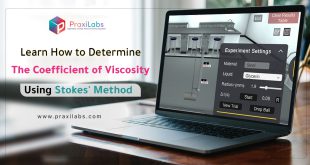Last Updated on December 19, 2023 by Zinab Hasssan Are you a teacher or instructor looking for interactive and creative ways to teach your students how to culture cells? culturing cell can be a challenging task for most students, but with the right approach, it can become an exciting and engaging learning experience for them. Cell culturing is the growth …
Read More »virtual learning articles
The Most Innovative Teaching Methods in Science
Last Updated on December 19, 2023 by Zinab Hasssan Science education plays a critical role in the future of the upcoming scientists, innovators, and problem solvers. Traditional teaching and education methods often fail to engage students and ignite their passion for scientific exploration, and this is where new innovative teaching methods in science education come into play. In this blog …
Read More »Reveal the Secrets of PraxiLabs Chemistry Virtual Labs
Last Updated on December 1, 2023 by Zinab Hasssan Virtual Labs now are one of the most critical e-learning methods that are used in facilitating science education, especially in chemistry. Chemistry virtual lab is an online simulation of a real chemistry lab. It is designed to help students conduct their chemistry experiments easily without any risks in a safe environment …
Read More »The Future of Science Education | PraxiLabs’ Roadmap
Last Updated on February 4, 2024 by Nourhan Essam The future of science education is now closely linked to technologies that are widely accepted and used, especially during and after the COVID-19 pandemic, which made the use of these technologies part of the regular curriculum. Virtual labs now are one of the most effective educational technologies that are used in …
Read More »Learn How to Determine the Coefficient of Viscosity Using Stoke’s Method
Last Updated on September 25, 2024 by Zinab Hasssan Imagine that you have a cup with a hole in the bottom. If you pour honey or glycerin into the cup, you will find that the cup drains very slowly. But in the case of water, the cup will drain much more quickly. That happens because “viscosity” is higher in the …
Read More » PraxiLabs A virtual world of science
PraxiLabs A virtual world of science





